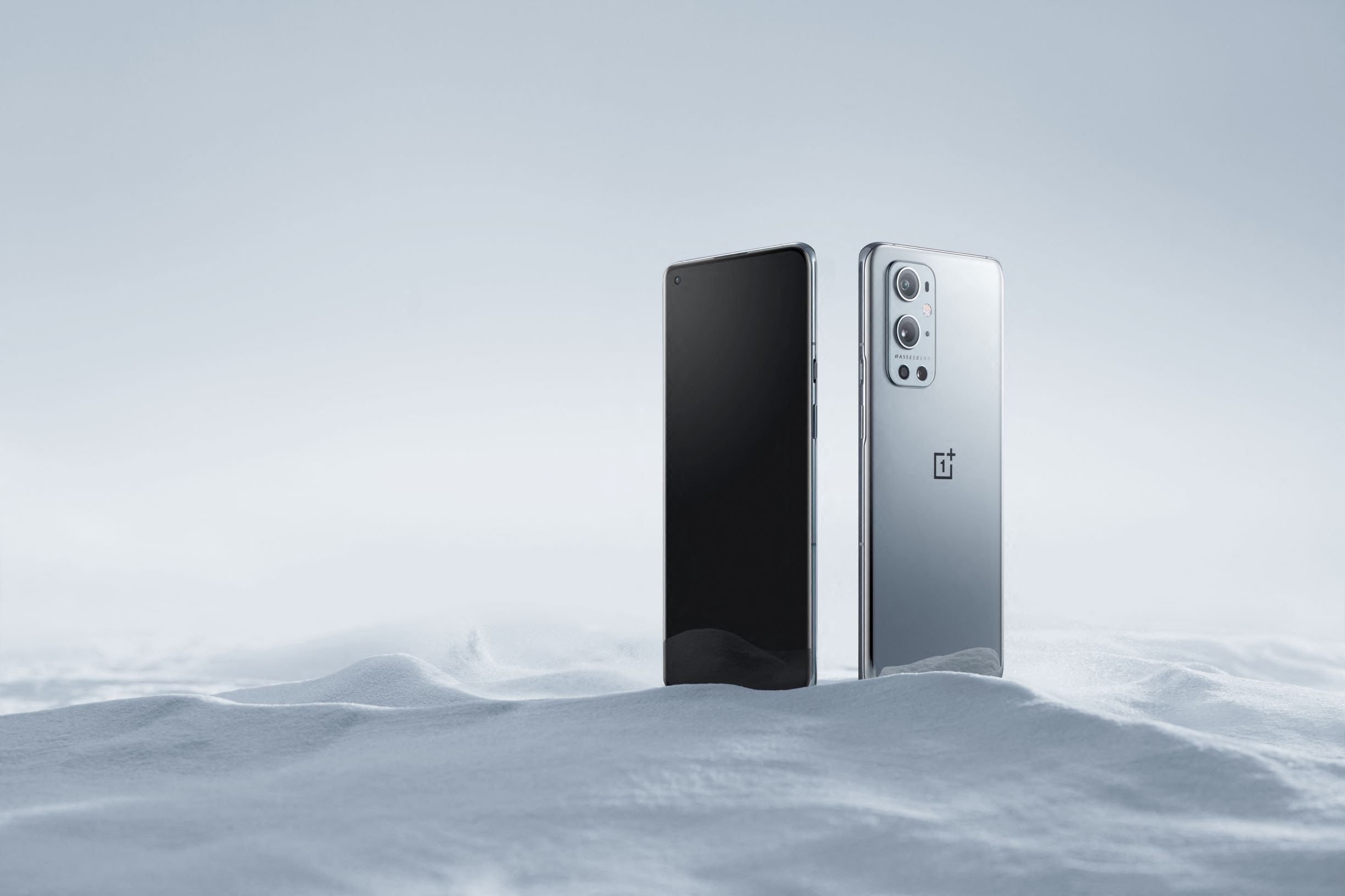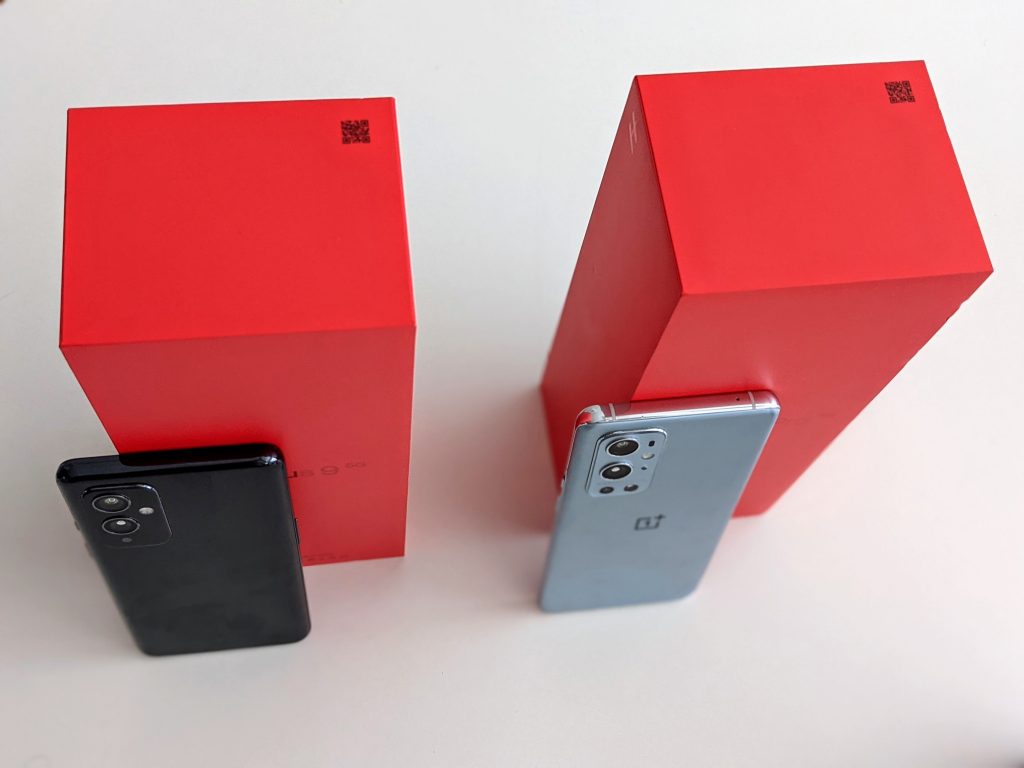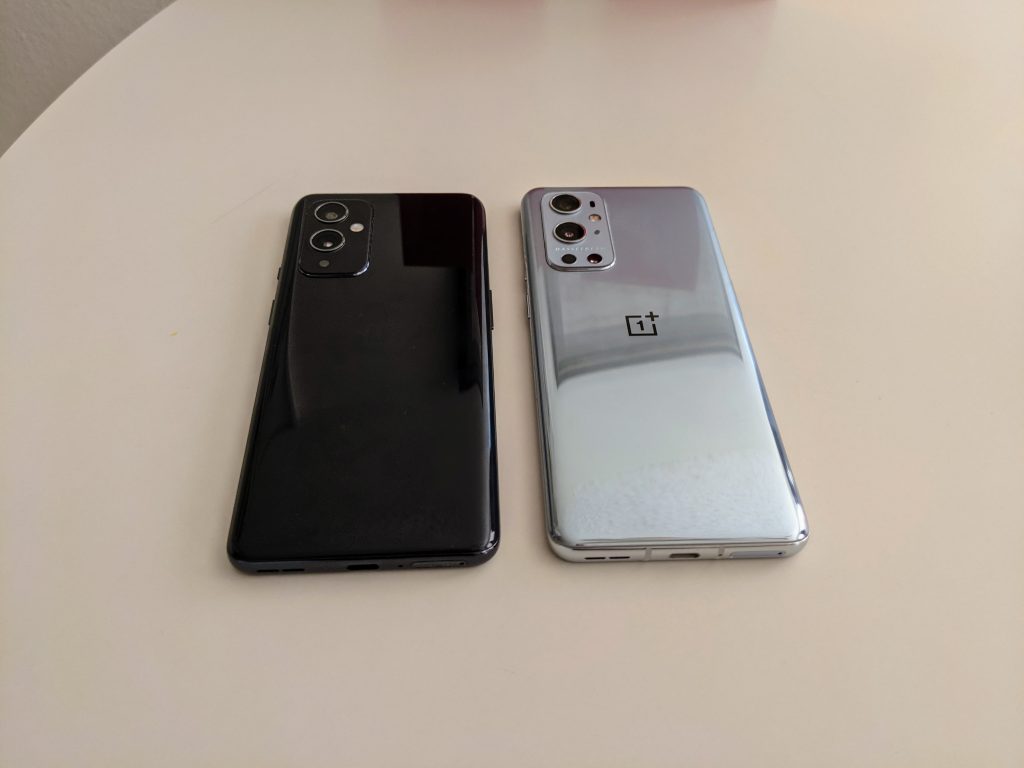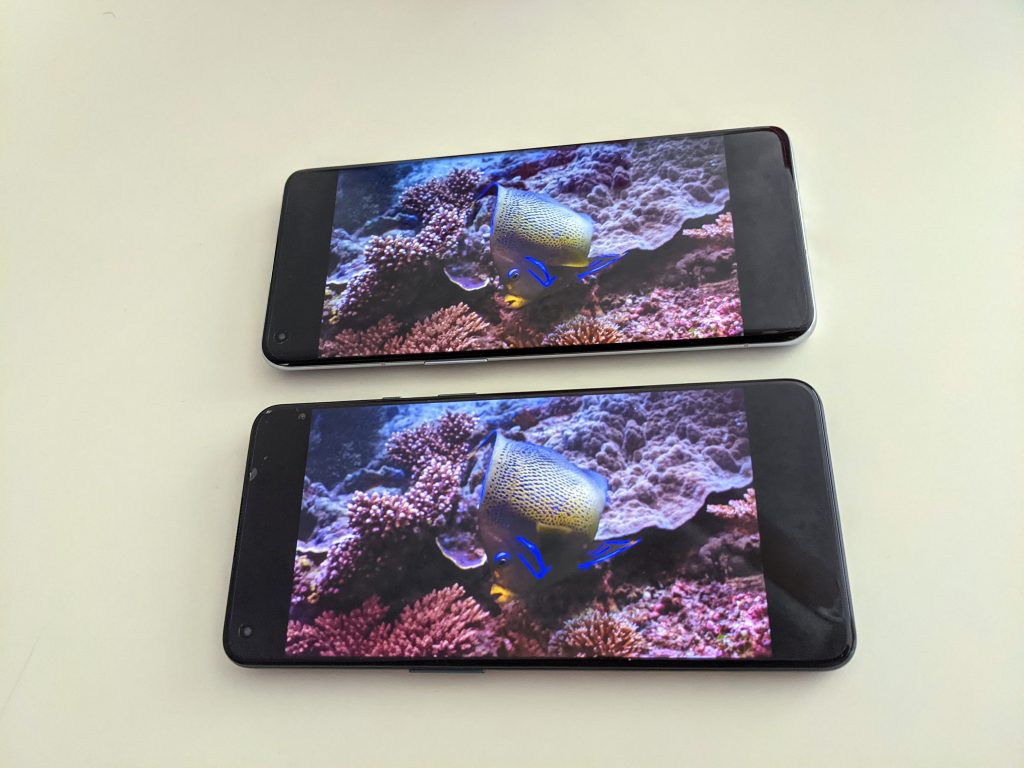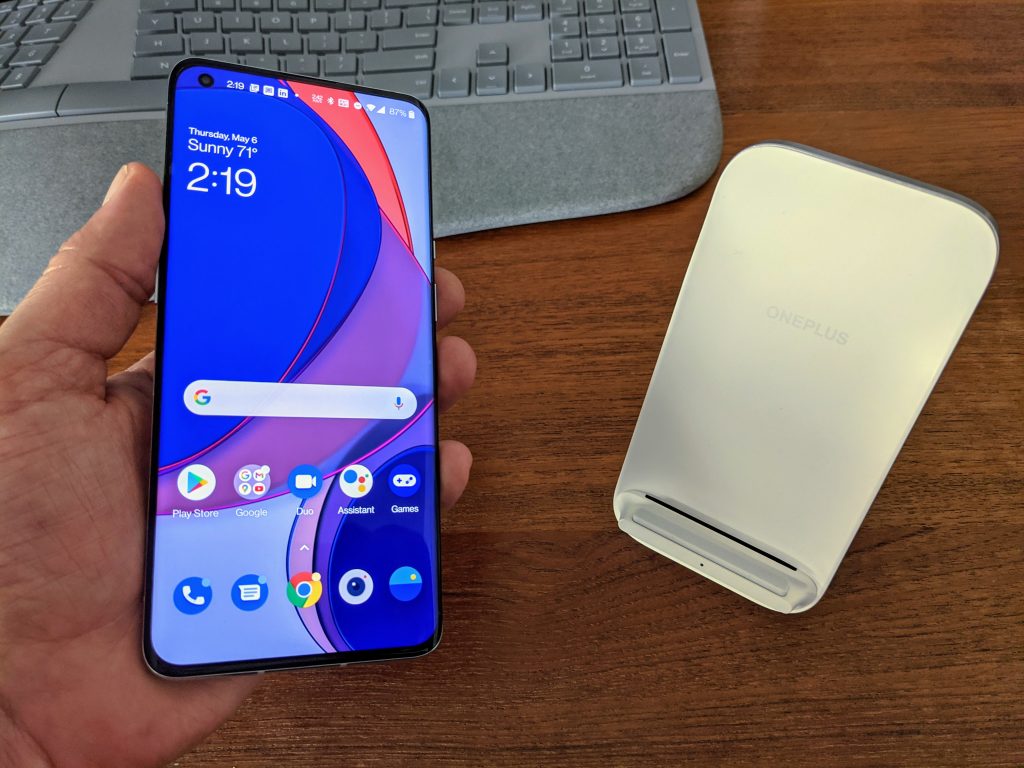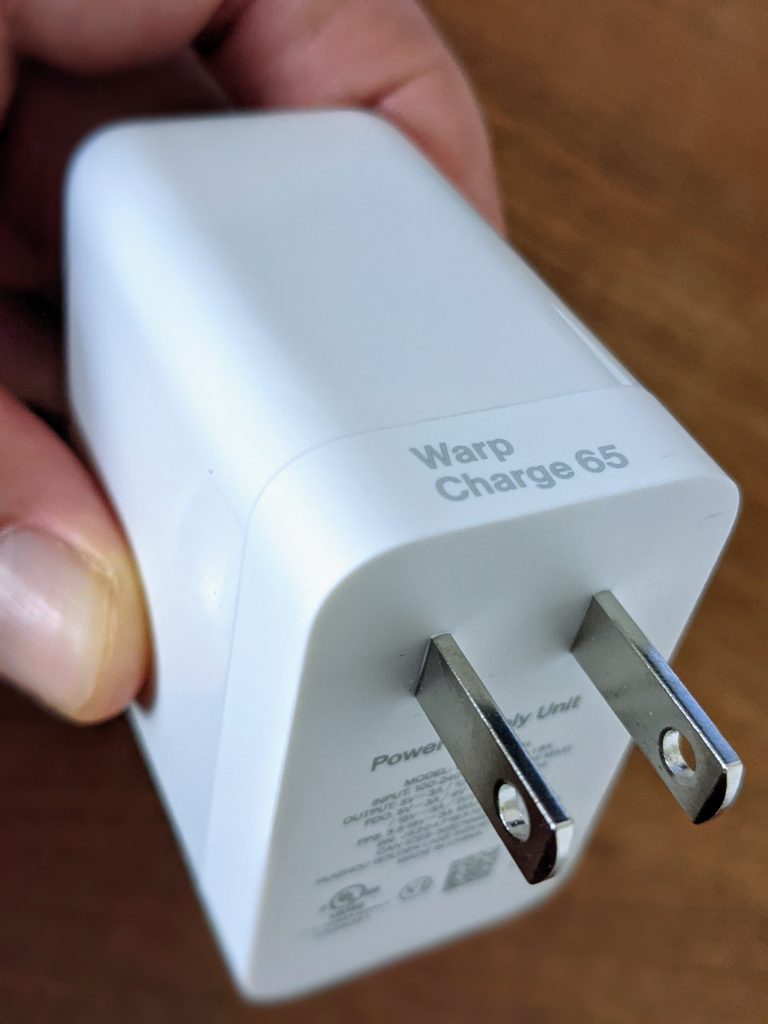While nothing beats the fan base of the iPhone, some Android brands such as Samsung Galaxy and Google Pixel have plenty of loyalists. Thanks to its sleek designs, bang-for-your-buck technology, and some of the coolest branding and packaging of any smartphone brand, OnePlus, which has been releasing new generations of its eponymous Android flagships every year since it was founded in 2013, has long punched way above its weight and remained popular among tech hipsters and enthusiasts. Last month, the Chinese mobile manufacturer released not only its latest OnePlus Series 9 smartphones, but also its first-ever smartwatch. After spending a month with all three devices — the OnePlus 9 and OnePlus 9 Pro smartphones and the OnePlus Watch — we continue to be fans, too.
State-of-the-Art Siblings
As with previous generations, OnePlus offers its 9 Series in two flavors: the OnePlus 9 ($729-$829), and the top-of-the-line OnePlus 9 Pro ($969-$1,069). The higher-priced version of each phone ups the RAM from 8GB to 12GB and the ROM from 128GB to 256GB.
Despite the $200 price difference, both models share most of the cutting-edge features, including a best-in-class Snapdragon 888 chipset (the same as the Samsung S21), superfast 65W Warp 29-minutes-to-full-charge capability, and AMOLED displays with 120Hz refresh rates. In addition to 8K at 30fps video capability, both phones have a 48MP main camera, a 50MP ultra-wide-angle camera, and a 2MP monochrome camera.
The 9 Series phones include the new Hasselblad Camera for Mobile imaging software, which OnePlus developed together with the iconic Swedish camera manufacturer. Realistic color calibration is the main focus of this software, though the Pro mode features a similar interface to Hasselblad’s cameras and allows for manual control of ISO, exposure, focus, and white balance, among other settings, which serious photographers will appreciate since both phones can shoot 12-bit RAW photos for ultimate editing flexibility.
Points of Difference
The main differences between the two models lie in the overall size, screen resolutions, and imaging features. The OnePlus 9 has a 6.65-inch fully flat screen versus the OnePlus 9 Pro’s 6.7-inch screen, which is curved at the edges. The 9 has FHD+ resolution versus the 9 Pro’s QHD+ resolution. At this size, though, it’s hard for most people to tell too much of a difference when the baseline of both models is seamlessly quick responsiveness and faithful color reproduction whether displaying high-def videos or video games.
On the camera front, the main difference is that unlike the OnePlus 9, the OnePlus 9 Pro has an 8MP telephoto camera for better zoom capability. And while both phones can be charged wirelessly, only the 9 Pro has a 50W wireless charging capability with OnePlus’s optional new Warp Charge 50 Wireless ($70), which cordlessly juices the phone from empty to 100 percent in 43 minutes.
Canny Valley
Photo-wise, we found both phones to deliver stellar sharpness and differentiated colors in most cases. Bokeh effects in the background of portrait mode pictures always delivered artful results, while most pictures remained focused even while taken on the fly with some shakiness in low light. We got the most use out of the ultrawide camera, which allowed us to capture the broad expanse and scale of Death Valley on a recent trip, as well as extreme close-ups of the occasional rare succulent at high altitudes. Even in Death Valley’s extremes of intense brightness and low light, which results in ever-changing multiple shades of brown and red, the 9 Series cameras delivered accurate, detailed, and nuanced results.
While 8K at 30fps video capability certainly offers bragging rights, it’s not that useful unless you own an 8K TV. We shot mostly in 1080p and 4K 120fps, which is plenty state-of-the-art for most people, though the results were not as crisp and clear as we expected, despite the 9 Pro’s DOL-HDR-powered image stabilization — even in the instances where shakiness was at a minimum both in bright sunlight and around a candlelit dinner table at home.
Fast and Fabulous
Thanks to the 9 Series’s state-of-the-art Snapdragon 888 processor, we found both phones to deliver stellar responsiveness via touchscreen, fast operation when opening and closing apps, and seamless multitasking, enabling us to check emails and surf the web even as we were using the phone as a WiFi 6 hotspot with the rest of our travel companions in the car. Both phones are 5G capable and compatible with T-Mobile’s 5G network, but only the 9 Pro also supports Verizon’s Gigabit-fast (but scarcely available) millimeter wave (mmWave) frequencies. AT&T users will simply get LTE and 4G speeds. We used both a standard T-Mobile SIM and a Google Fi SIM, which operates on T-Mobile networks, and experienced consistent 5G performance wherever a signal was available.
Watching video is a satisfying experience on both phones, but particularly delightful on the 9 Pro’s slightly larger 6.75-inch AMOLED screen, especially in QHD+ for content that supports it. For content that doesn’t, the built-in low-temperature polycrystalline oxide (LTPO) technology automatically reduces the 120Hz refresh rate according to whatever content is onscreen, which also saves battery power. Displays on both phones have HDR10+ and 10-bit color depth capability, which means compatible content on everything from Disney Plus and Netflix to Prime Video and YouTube is astonishingly cinematic and immersive, even in the palm of our hands. While watching Mank on the 9 Pro, we were impressed with the depth, detail, and defined contrast of big set pieces, with layered smoke in the foreground and discernable horse riders in the background—and this was in black and white. There’s even a new Ultra-high Video Resolution setting that uses an algorithm to optimize video clarity, though so far only Instagram supports it, offering outsized detail and vividness even in an endless feed of vertical video ads for next-gen shoes and pants.
Big and Rugged
At 160 by 74.2 by 8.7mm and 163.2 by 73.6 by 8.2mm, the OnePlus and OnePlus 9 Pro, respectively, are on the tall side and don’t fully fit in shallower pockets. That said, the overall look is sleek and slim, with the latter model’s aluminum body only 2.2mm (.08 inches) thin. Even so, you’ll likely want to add one of OnePlus’s Sandstone Bumper or Karbon Bumper protective cases. Both phones are IP68 rated, which means they’re waterproof to a depth of 1.5m (4.9 feet) underwater for 30 minutes.
If there is one small hitch in the otherwise flawless design of these phones, it’s the non-retractable metal prongs on the included 65W Warp Charger, not a huge trade-off considering its dazzlingly speedy charging capabilities, but it makes total portability tricky if you don’t want to scratch anything in your bag or hurt yourself while fumbling for it. Overall, though, this is among the most surprising and delightful Android offerings on the market.
OnePlus 9 and OnePlus 9 Pro are available at T-Mobile, Amazon, Best Buy, B&H, and oneplus.com.

Bold and sleek packaging is a OnePlus staple. 
The OnePlus 9 (left) and OnePlus 9 Pro (right). 
The OnePlus 9 Pro (right) is slightly taller than the One Plus 9. 
The OnePlus 9 Pro’s Hasselblad-inspired Pro camera mode. 
Both the OnePlus 9 (top) and 9 Pro (bottom) have HDR10+ and AMOLED screens with 120Hz refresh rates. 
The optional OnePlus Warp Charge 5Wireless Charger cordlessly juices up the 9 Pro from empty to full in just 43 minutes. 
The Sandstone Bumper (left) and Karbon Bumper protective cases. 
The included Warp Charge 65T delivers a day’s worth of power in just 15 minutes.







